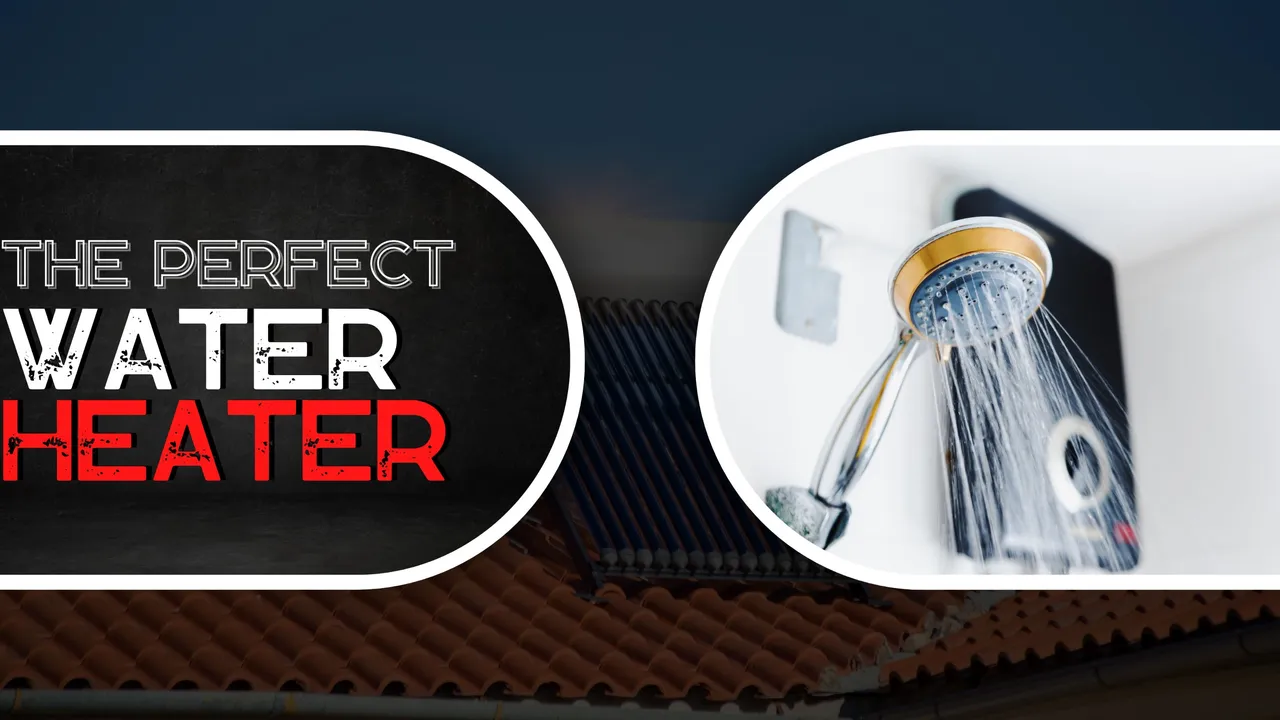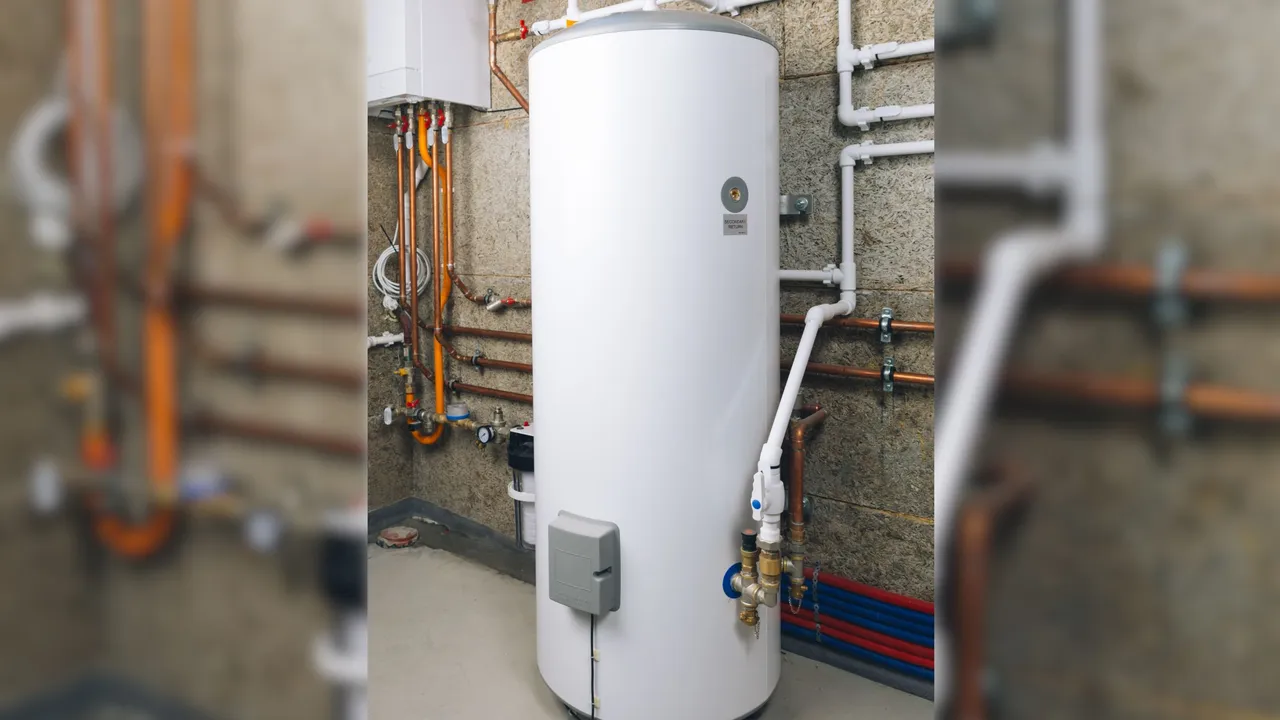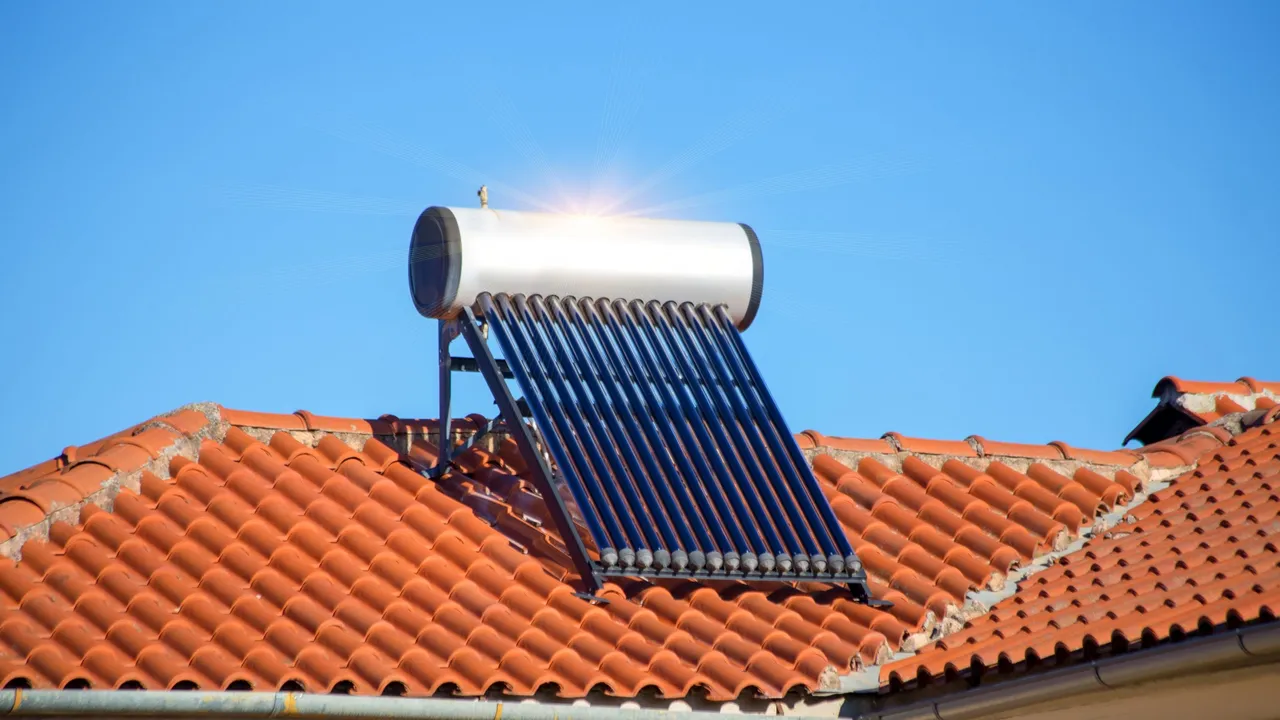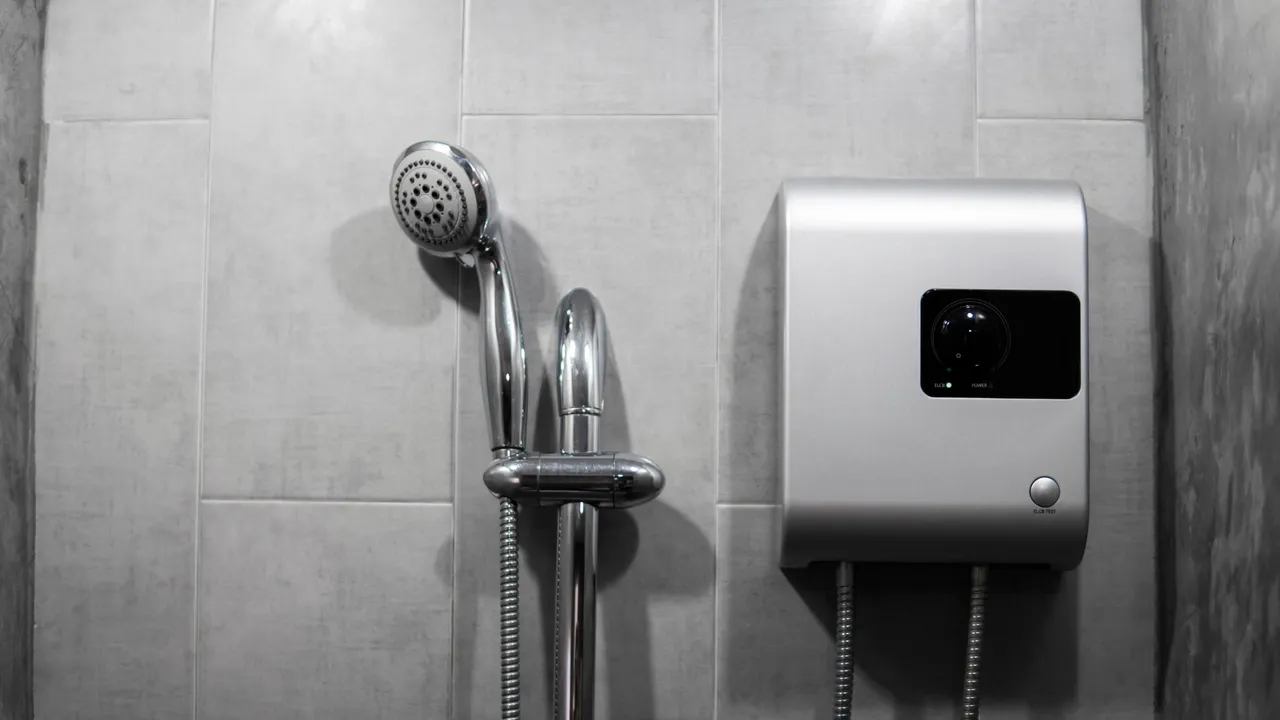

One of the first things I learned when I came to live in Mexico City is that at home, it is necessary to have a good water heater to survive the last and first months of the year. Even though we don't suffer from snowfalls, I assure you that bathing with cold water when the temperature drops below 10°C is not at all pleasant. So after living practically all my life on a Caribbean island, where the heat is constant and there are no seasonal changes, I had to get used to a new member in the household.
Baje para ver la versión en español o haga clic - AQUÍ -
Throughout all the years I have lived in this country and in the different flats and houses I have lived in, I have got to know and learn how to use different types of water heaters, each one with its advantages and disadvantages. That's exactly what I want to talk to you about today in this Tell it all Friday, because with the arrival of autumn, temperatures have started to drop, and the sun has started to become scarcer and scarcer. So now more than ever it is necessary to have a good dose of hot water to start or end the day (depending on your tastes).
I have "experience" in using three types of water heaters, I will refer to them as they are known in Mexico.
STORAGE WATER HEATER

I believe that in most of the country it is the most common and, as its name indicates, it works by means of a tank in which hot water is stored so that it is available for use. It works with gas and has a pilot light, which is a small flame that lights a burner, which heats the water in the tank according to the temperature we have chosen.
ADVANTAGES:
- If we leave it on, we will have hot water available all the time.
- The water pressure does not matter much, as it is stored in the tank and will always come out with a more or less constant pressure.
DISADVANTAGES:
- It uses a lot of gas if it is left on all the time and if it is turned off to save gas, it has to be turned on every time it is needed, and it takes about 20 minutes to heat up, sometimes more.
- If the heater tank is small, the hot water will run out very quickly, and you will have to wait for it to heat up again.
SOLAR WATER HEATER

This is the last one I have come into contact with, and it is very common to see in places where it is normally very sunny most of the year, but the climate is not so hot. How it works, I don't know very well because the contact with them is limited, because unlike the others, this one is installed on the roof of the houses or buildings and the users practically don't see them. It has long tubes which receive the sun's rays and heat the water that is stored in a tank. It does not need anything else to work.
ADVANTAGES:
- It is extremely economical, the costs involved are simply the installation and some eventual maintenance.
- Hot water is always available without the need to wait or turn it on.
DISADVANTAGES:
- Works only half-heartedly on rainy or very cloudy days. Yes, the water is heated, but it does not last as long as hot due to the absence of its main "fuel".
- As the hot water is stored in a tank, the amount of water available is limited and if it runs out it will take some time to heat up again and will depend on the amount of sunshine.
PASS-THROUGH or INSTANTANEOUS WATER HEATER

I have saved my favourite type of heater for last, and from the title you can imagine why. In this one there is no tank or water that runs out, its operation is very simple: the water is heated as it passes through it. It also works with gas and with a pilot light that turns on a huge burner, which is responsible for heating the water as it is needed. There are some that need to have the pilot light on all the time, but there are some that turn themselves on when you turn on the hot water tap (MAGIC).
ADVANTAGES:
- They use very little gas, even in the models in which the pilot light must be kept on, as they only heat the water that is going to be used and that's it.
- There is always hot water available, no matter how much we use or how many people take a bath before us, as long as there is gas, there will be hot water.
DISADVANTAGES:
- Most require good water pressure, so buying the wrong model may mean you also have to buy a pump to improve the pressure. There are models that work with low water pressure, but they are a bit more expensive.
As I have already told you, my favourites are the pass-through ones and the times I have had to decide between one flat or another to move, that has been a factor that I have taken into account due to the savings involved and the comfort. Currently, I have a solar water heater, which is my second favourite, as you spend virtually no money for hot water, however, it has the disadvantage of relying on the sun and a tank, which limits the amount of hot water that comes into the house. The ones I hate and never want to use again are the tank ones, they are expensive, take ages to heat up and run out quickly, lousy service.
At home, we are looking to install a water heater for the winter months and rainy days, to take away the problem of relying solely on solar, hopefully this will be possible during this winter, if not, I hope it will be for next winter at the latest. The good thing is that this will already be our heating system.

EL MEJOR CALENTADOR DE AGUA



Una de las primeras cosas que aprendí al llegar a vivir a la Ciudad de México es que en casa es necesario contar con un buen calentador de agua para sobrevivir los últimos y los primeros meses del año. A pesar de que no sufrimos de nevadas, les aseguro que bañarse con agua fría cuando la temperatura baja de los 10 °C no es absolutamente nada placentero. Así que después de vivir prácticamente toda mi vida en una isla caribeña, donde el calor es constante y no hay cambios estacionales, tuve que acostumbrarme a un nuevo miembro en el hogar.
A lo largo de todos los años que he vivido en este país y en los diferentes departamentos y casas que he habitado, he logrado conocer y aprender a usar diferentes tipos de calentadores de agua, cada uno con sus ventajas y desventajas. Justamente de eso quiero hablarles el día de hoy en este viernes de Cuéntalo Todo, y es que con la llegada del otoño, las temperaturas han comenzado a descender y el sol ha comenzado a estar cada vez más escaso. Por lo que ahora más que nunca es necesario contar con una buena dosis de agua caliente para comenzar o finalizar el día (según los gustos de cada quién).
En mi haber tengo "experiencia" usando tres tipos de calentadores de agua, me referiré a ellos como son conocidos en México.
CALENTADOR DE DEPÓSITO

Creo que en gran parte del país es el más común y como su nombre lo indica, funciona mediante un depósito en el cual se almacena el agua caliente para que esté disponible para su uso. Funciona con gas y cuenta con un piloto, el cual es una llamita pequeña que enciende una hornilla, la cual es la que calienta el agua del depósito según la temperatura que hayamos elegido.
VENTAJAS:
- Si lo dejamos encendido tendremos agua caliente disponible todo el tiempo.
- No importa mucho la presión del agua, ya que como se almacena en el depósito siempre saldrá con una presión más o menos constante.
DESVENTAJAS:
- Gasta muchísimo gas si se deja encendido todo el tiempo y si se apaga para ahorrarlo, hay que encenderlo cada vez que lo necesitemos usar y se tarda aproximadamente 20 minutos en calentar, a veces más.
- Si el depósito del calentador es pequeño, el agua caliente se acabará muy rápido y deberemos esperar a que se vuelva a calentar.
CALENTADOR SOLAR

Este ha sido el último con el que he tenido contacto y es muy común verlo en lugares donde normalmente hace mucho sol buena parte del año, pero el clima no es tan caluroso. Cómo funciona, no lo sé muy bien por qué el contacto con ellos es limitado, ya que a diferencia de los otros, este se instala en el techo de las casas o edificios y los usuarios prácticamente no los ven. Cuenta con unos tubos largos los cuales reciben los rayos del sol y se encargan de calentar el agua que se almacena en un depósito. No necesita nada más para funcionar.
VENTAJAS:
- Es sumamente ahorrativo, los costos que acarrea simplemente son el de instalación y algún mantenimiento eventual.
- Siempre hay agua caliente disponible sin necesidad de esperar o encenderlo.
DESVENTAJAS:
- Funciona a medias en días lluviosos o muy nublados. Sí, se calienta el agua, pero no dura tanto tiempo caliente debido a la ausencia de su principal "combustible".
- Al almacenar el agua caliente en un depósito, la cantidad de agua disponible está limitada y si se acaba tardará un poco en volver a calentar y dependerá de la cantidad de sol que haya.
CALENTADOR DE PASO o INSTANTÁNEO

Dejé para el final mi tipo de calentador favorito y por el título se pueden imaginar por qué lo es. En este no hay depósito ni agua que se acabe, su funcionamiento es muy sencillo: el agua se va calentando a medida que va pasando por él. Funciona también a gas y con un piloto que enciende una hornilla enorme, la cual es la encargada de ir calentando el agua a medida que se va necesitando. Hay unos que necesitan tener el piloto encendido todo el tiempo, pero haya unos que se encienden solos al momento de abrir la llave del agua caliente (MAGIA).
VENTAJAS:
- Gastan muy poco gas, incluso en los modelos en los cuales el piloto debe mantenerse encendido, ya que solo calientan el agua que se va a utilizar y ya.
- Siempre hay agua caliente disponible, sin importar la cantidad que gastemos o las personas que se bañen antes que nosotros, siempre que haya gas, habrá agua caliente.
DESVENTAJAS:
- La mayoría necesita una buena presión de agua, así que comprar el modelo equivocado puede implicar tener que también comprar una bomba para mejorar la presión. Hay modelos que funcionan con baja presión de agua, pero son un poco más costosos.
Como ya les adelanté, mis favoritos son los de paso y las veces que he tenido que decidir entre un departamento u otro para mudarme, ese ha sido un factor que he tenido en cuenta debido al ahorro que implica y a la comodidad. Actualmente, cuento con un calentador solar, el cual es mi segundo favorito, ya que no se gasta prácticamente nada de dinero para contar con agua caliente, sin embargo, tiene la desventaja de depender del sol y de un depósito, lo cual limita la cantidad de agua caliente que cae en la casa. Los que detesto y no quiero volver a usar jamás son los de depósito, son caros, calentar el agua tarda muchísimo y se acaba rápido, pésimo servicio.
En casa estamos buscando instalar un calentador de paso para los meses invernales y los días lluviosos, para quitarnos el problema de depender únicamente del solar, esperemos que esto sea posible durante este invierno, si no, espero que a más tardar sea para el próximo. Lo bueno es que ese ya será nuestro calentador permanentemente y eso me da mucha tranquilidad, aunque ustedes no lo crean, jajaja. Espero que mi experiencia con este tipo de aparatos para el hogar les sirva y les ayude a tomar una decisión más informada o acertada.
Thank you very much for reading me, see you in the comments
Muchas gracias por leerme, nos vemos en los comentarios




